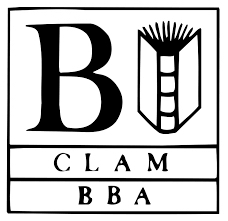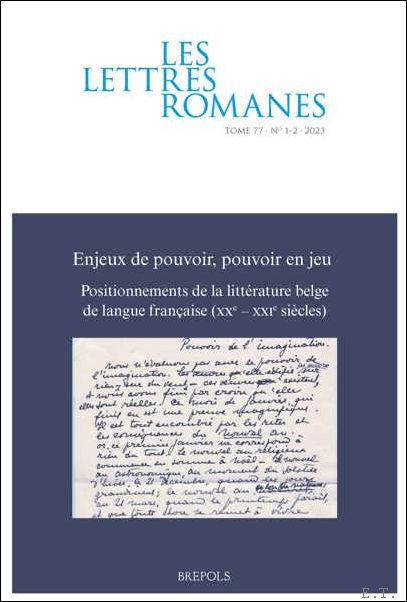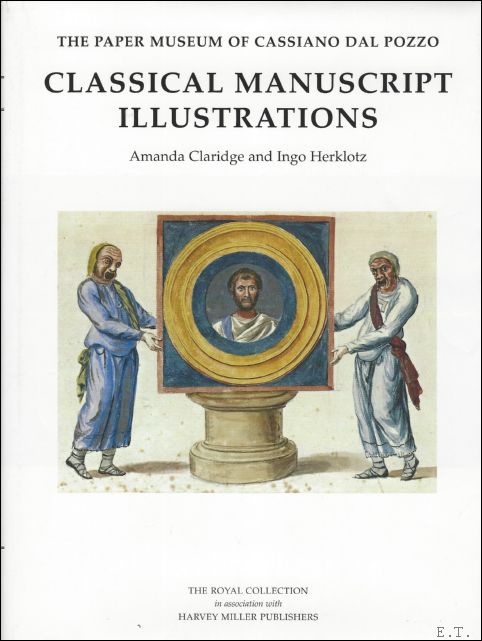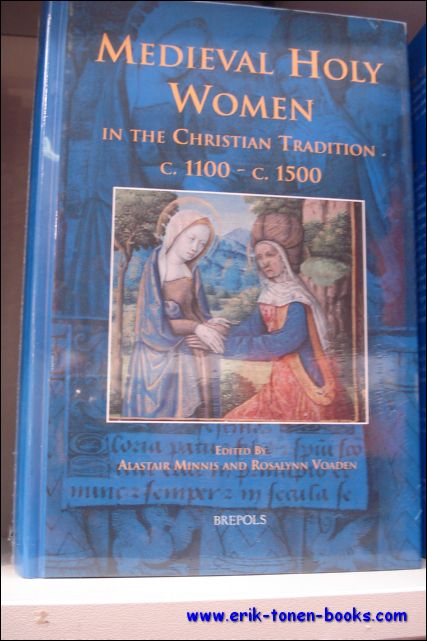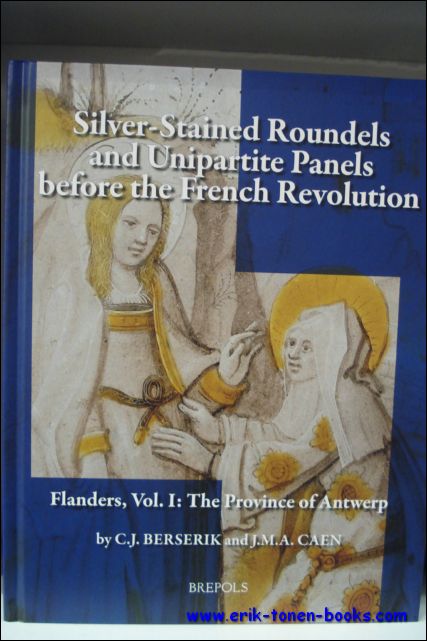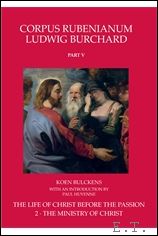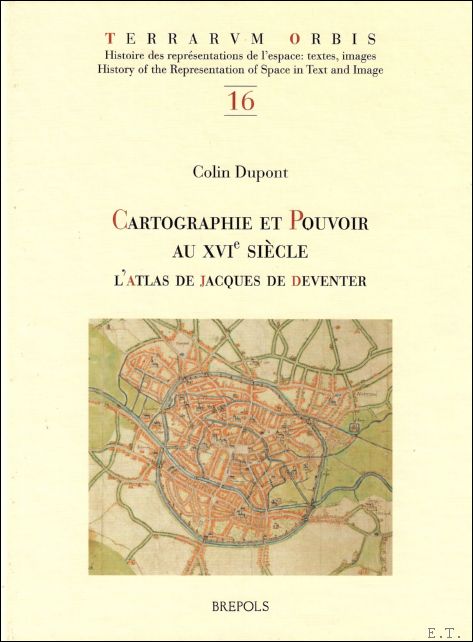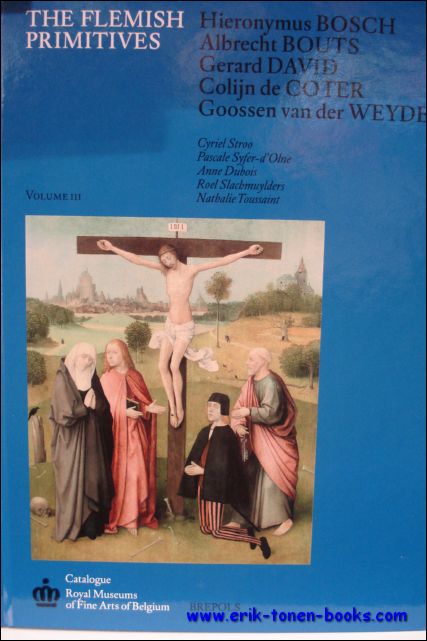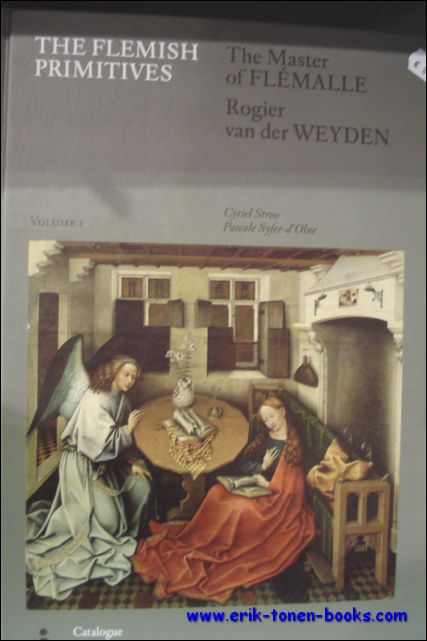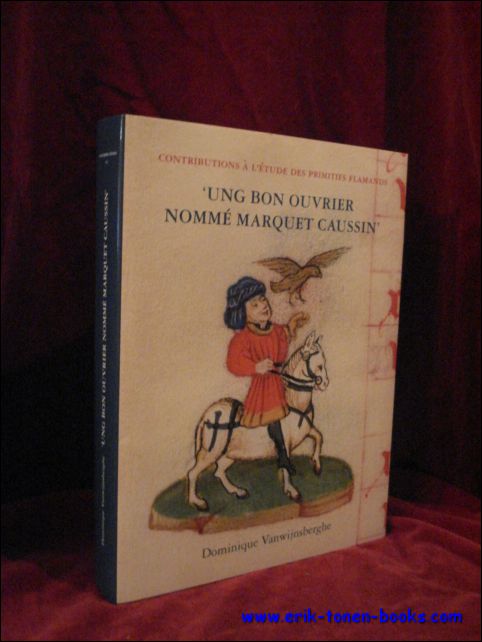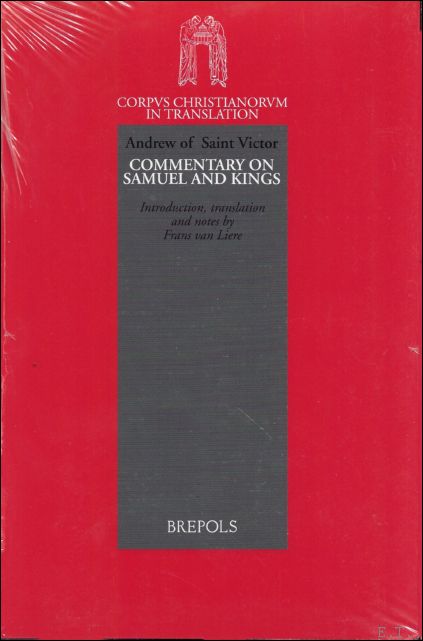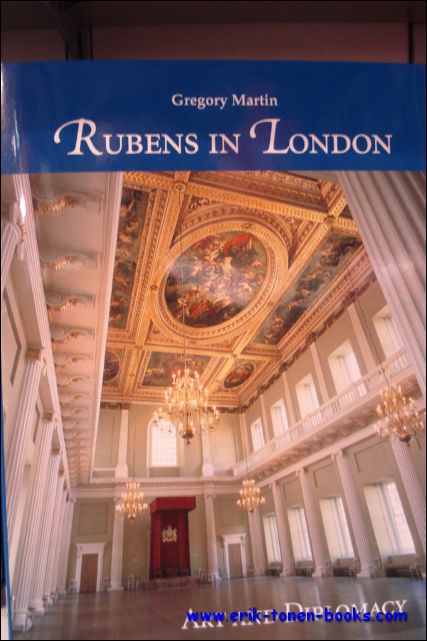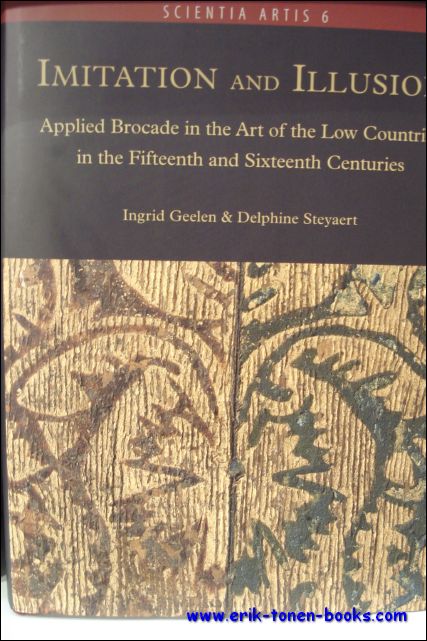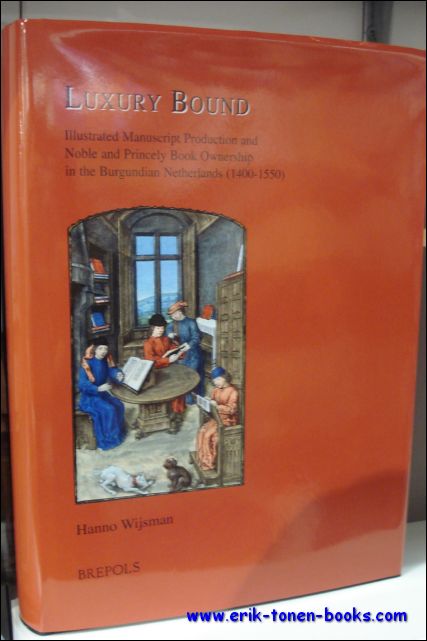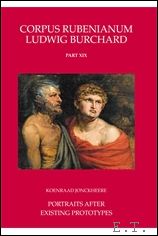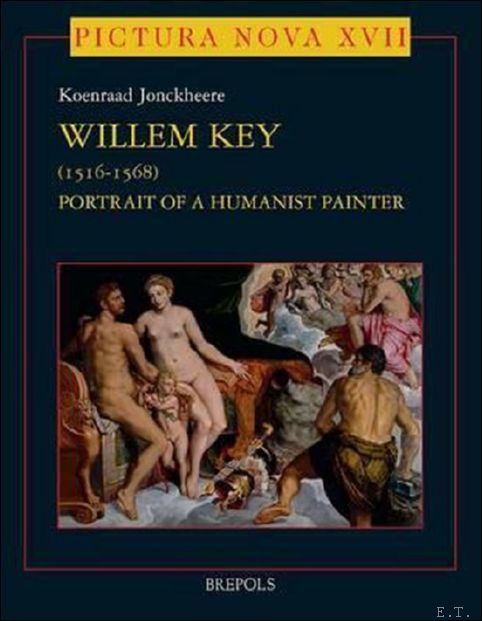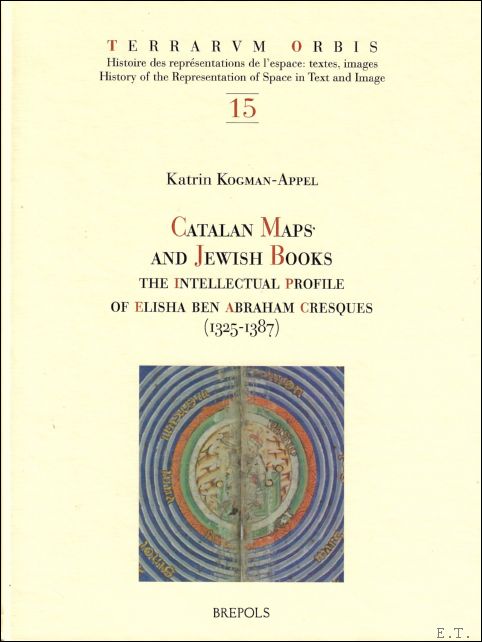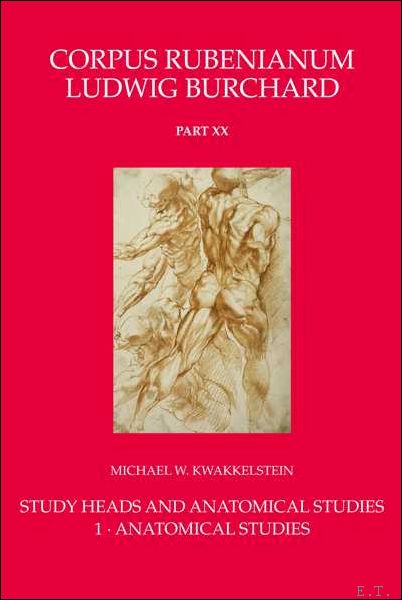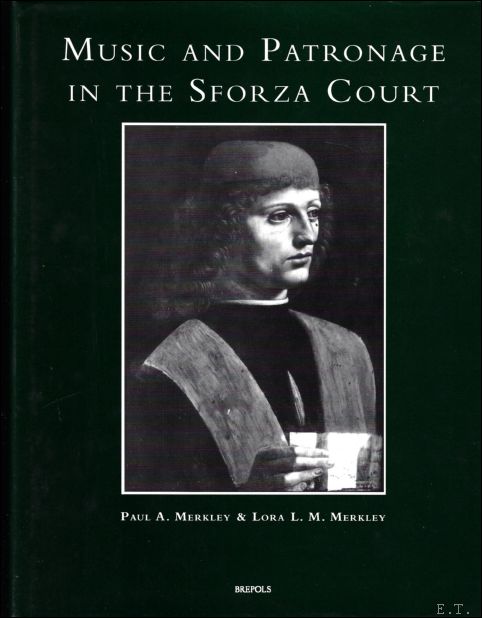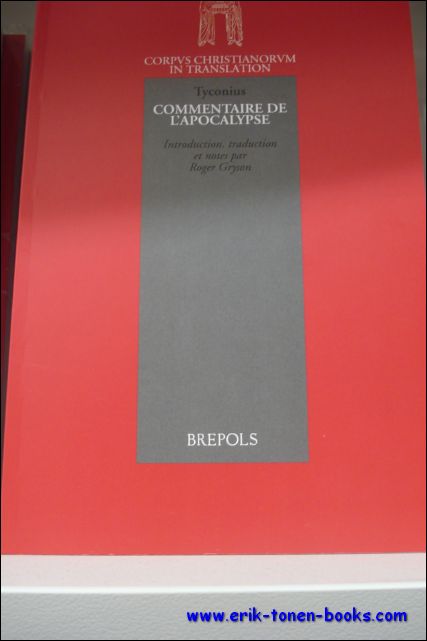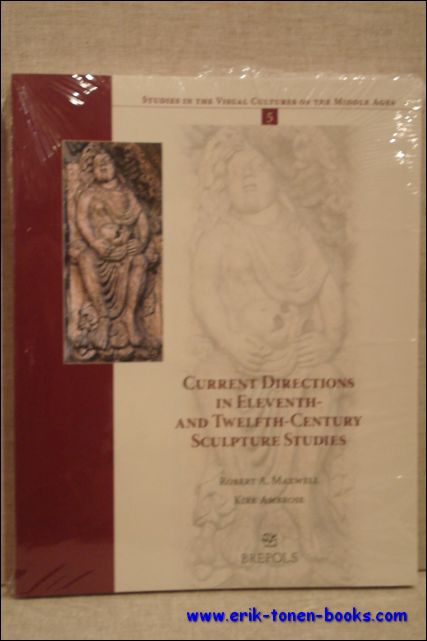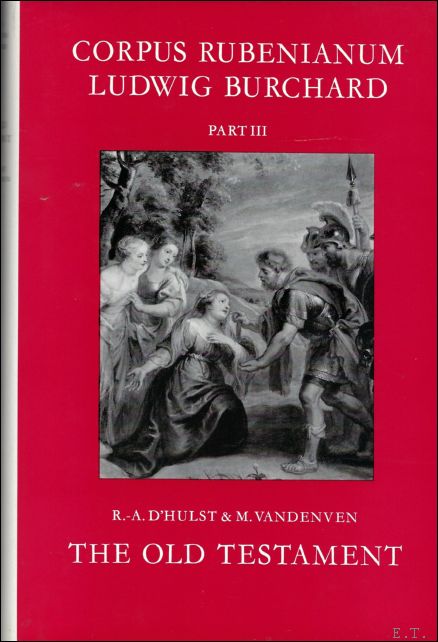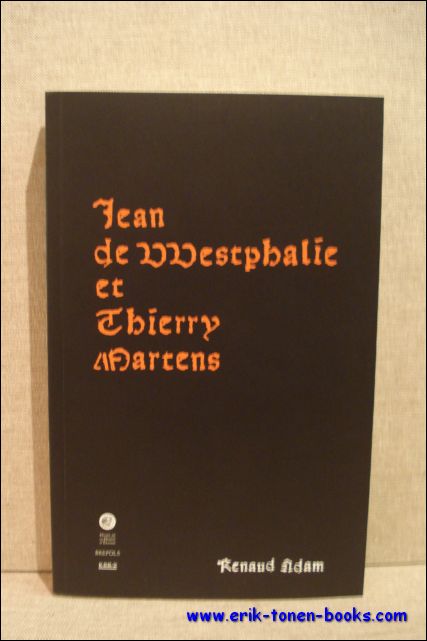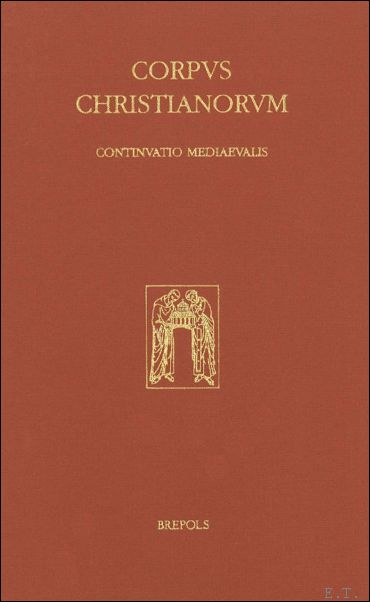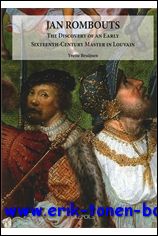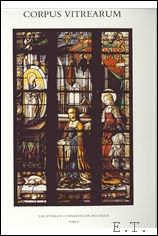Brepols Publishers
35 books found
Page 1
--
Les lettres romanes 77 1-2 (2023)
Enjeux de pouvoir, pouvoir en jeu. Positionnements de la littérature belge de langue française (XXe ? XXIe siècles)
Brepols - Harvey Miller, 2023. Pages: vi + 188 pages,Size:156 x 234 mm, Illustrations:3 b/w Language(s):French. ISBN: 9782503603834
Anna Loba, Christophe Meurée, Joanna Teklik et Maxime Thiry, Introduction Bernard Ribémont, Science, pouvoir dans la littérature francophone de Belgique. Quelques exemples en forme de contre-utopies Agnieszka Kukuryk, L?utopie fiumaine : fête révolutionnaire selon Léon Kochnitzky Maria Giovanna Petrillo, Jean-Philippe Toussaint : le pouvoir de la littérature belge dans une clé USB Marinella Termite, Un désir de communauté entre poétique et politique : Antoine Wauters Anna Loba, Marie Gevers : contre le pouvoir des grands sur les petits Catherine Gravet, Des romancières en lutte contre le patriarcat ? Les cas de Françoise Mallet-Joris (Trois âges de la nuit, 1968) et d?Adeline Dieudonné (La Vraie Vie, 2018) Marie Giraud-Claude-Lafontaine, « Les sexes politiques » de Lisette Lombé Laurence Boudart, Et si le pouvoir de l?entreprise pouvait vaciller ? Circuit de Charly Delwart Joanna Teklik, La mémoire en décalage. L?identité en jeu. Lettres belges au lendemain de la guerre Corentin Lahouste, Du protéiforme et du palpitant : Antoine Boute et l?hétérogénéisation jubilatoire du réel Maxime Thiry, (Se) Penser en décalé : esquives et adhérences du surréalisme bruxellois Les Livres
Booknumber: 61550 | Price: EUR 52.00
A. Claridge, I. Herklotz
Classical Manuscript Illustrations
Miller-brepols, 2012. Hardback with dusjacket in fine condition !!, Languages: English, 413pp. illustration in color. ISBN: 9781905375769
The Paper Museum (?Museo Cartaceo?) is a collection of some 10,000 drawings and prints assembled during the seventeenth century by the Roman patron and collector, Cassiano dal Pozzo, and his younger brother, Carlo Antonio. It represents one of the most significant attempts before the age of photography to embrace human knowledge in visual form, documenting ancient art and culture, architecture and topography, natural history and social customs.The 160 drawings catalogued in this volume are derived from five ancient manuscripts: the famous Vatican Vergil, the so-called ?Roman? Vergil, the Vatican Terence, and the less well-known Palatine Agrimensores, all in the Vatican Library, and from a fifth codex, now lost, known as the Chronography or Calendar of the year 354. The bulk of the drawings were copied for Cassiano between 1632 and 1634 for the purpose of studying both the characters depicted and the allied evidence of ancient costume and artefacts. By the later seventeenth century, when Pietro Santi Bartoli executed the last group of drawings in the present volume for Carlo Antonio, manuscript illustrations had come to be cherished as much for their rarity as examples of ancient painting as for their documentary value. Introductory essays provide an overview of the dal Pozzo commissions, the manuscripts and their history down to Cassiano?s day, as well as their study in the wider context of classical scholarship through to the eighteenth century. All the drawings are reproduced in colour at full page, with accompanying descriptions of the subjects or relevant ancient verses in modern translation and brief commentaries.
Booknumber: 37625 | Price: EUR 159.90
A. Minnis, R. Voaden (eds.)
Medieval Holy Women in the Christian Tradition c.1100-c.1500 9782503531809
Brepols Publishers, 2010. hardcover XI 748 p., 3 b/w ill., 7 b/w line art, 156 x 234 mm Languages: English, Latin, French . ISBN: 9782503531809
The first comprehensive survey of the major - but much neglected - contribution made by holy women to the religious culture of the later Middle Ages. Medieval Holy Women in the Christian Tradition offers the first wide-ranging study of the remarkable women who contributed to the efflorescence of female piety and visionary experience in Europe between 1100 and 1500. This volume offers essays by prominent scholars in the field which extend the boundaries of our previous knowledge and understanding of medieval holy women. While some essays provide new perspectives on the familiar names of the unofficial canon of mulieres sanctae, many others bring into the spotlight women less familiar now, but influential in their own time and richly deserving of scholarly attention. The five general essays establish a context for understanding the issues affecting female religious witness in the later Middle Ages. The geographical arrangement of the volume allows the reader to develop an awareness of the particular cultural and religious forces in seven different regions and to recognize how these influenced the writing and reception of the holy women of that area. Seventeen major figures have essays devoted exclusively to each of them; in addition, the survey chapters on each region introduce the reader to many more. The extensive bibliographies which follow each chapter encourage further reading and study. Alastair Minnis was Director of the Centre for Medieval Studies and Head of the Department of English at the University of York, and is currently Douglas Tracy Smith Professor of English at Yale University. A Fellow of the Medieval Academy of America and of the English Association, he is the author of six monographs and the editor or co-editor of fifteen further volumes. Rosalynn Voaden (D.Phil., University of York, UK) is the author of God?s Words, Women?s Voices: The Discernment of Spirits in the Writing of Late-Medieval Women Visionaries, and is the editor or co-editor of several volumes in the field. She was a Research Fellow at St Anne?s College, Oxford, and is currently Associate Professor of English at Arizona State University.
Booknumber: 31307 | Price: EUR 130.00
BERSERIK, C.J.; CAEN, J.;
Silver-Stained Roundels and Unipartite Panels before the French Revolution Flanders, Vol. 2: The Provinces of East and West Flanders
Brepols Publishers, 2011. Hardcover, XIV 631 pages., 300 b/w ill. 900 colour ill., 230 x 315 mm, English. ISBN: 9781905375318
This checklist is the second in a series of volumes describing the silver-stained glass roundels and unipartite panels from the Middle Ages to the 18th century found in public buildings, museums and private collections in the present five provinces of Flanders (Belgium). It also includes documented roundels and unipartite panels whose whereabouts are presently unknown and those which have been removed to other locations or collections in the past. The checklist also mentions all known related material. Where possible, photographs of this material have been added. As far as the related material is concerned, the relevant publications are also mentioned. This material includes models, drawings, engravings, and roundels which belong either to the same series or to those which are copies of these series. The present volume covers the Provinces of East and West Flanders (more or less the former County of Flanders). The first checklist, concerning the Province of Antwerp, was published in 2007. Additional volumes for the Provinces of Flemish Brabant and Limburg (Vol. 3), and the one with Addenda (Vol. 4) are in the planning stage. The former County of Flanders, with the cities of Bruges and Ghent, must once have displayed huge quantities of stained glass, which for the most part have been lost or relocated. The causes and reasons for this loss include natural calamities, fires, deliberate destruction and neglect. Most of the surviving roundels are now in foreign collections: on the continent; in Great Britain; or in the United States of America. It is worthy of note that great efforts have been made in the USA and Great Britain to compile and publish checklists of silver-stained roundels and other small panels, originating from the Low Countries, whilst here, where they were produced, this series is the first genuine overview that has ever been published. During the 15th and 16th centuries roundels and small panels played an important role as 'public relations' gifts among the upper classes, the church and its associated religious orders. As these gifts played a very significant role in social life, demand for these items was very high. It is clear that the manufacture of roundels and small panels was a substantial part of the earnings of these glass workshops, which also produced monumental windows. The most popular themes were predominantly religious, but also included heraldic, secular, mythological and allegorical subjects. The seasons and months and labours of the year were also commonly found. In the late 16th and the 17th centuries the range of iconographical subjects became more secular with, among other themes, representations of professions. Heraldry also remained very important, and in the second half of the 17th and the beginning of the 18th centuries nearly all roundels and panels depicted armorials and included the name of their donors.
Booknumber: 31303 | Price: EUR 95.00
Bulckens, K.
The Life of Christ before the Passion. The Ministry of Christ . Corpus Rubenianum Ludwig Burchard volume V -2.
Brepols - Harvey Miller, 2017. Hardcover with dusjacket. 360 p., 149 b/w ill. + 46 colour ill., 180 x 265 mm, Languages: English. ISBN: 9781909400863
The works discussed span the entirety of Rubens?s career and attest to the complexity of the iconographic division in which the depictions of Jesus Christ?s public life were thought and created. The present volume V - 2 of the Corpus Rubenianum catalogues Rubens?s exploration and representation of the theme of the public life of Christ. The period in Christ?s life during which he spread his message by wandering and preaching with the apostles in the Holy Land, offered a particularly poignant and important part of religious discourse within the context of the Counter-Reformation period in the Netherlands. In order to rebut the Calvinists and their call for the stripping of imagery and lavish decoration from churches, and the destruction of furniture and altarpieces that followed, the Roman Catholic Church sought to establish an innovative and powerful visual rhetoric with renewed urgency. The scenes from the ministry of Christ could serve as potent reminders of the core values of Roman Catholic spirituality. Rubens, as a devout Catholic, created a number of impressive paintings to express this, although most of the works he produced seem to have been intended for the open market. The works discussed span the entirety of Rubens?s career and attest to the complexity of the iconographic division in which the depictions of Jesus Christ?s public life were thought and created.
Booknumber: 50406 | Price: EUR 165.00
C. Dupont
Cartographie et pouvoir au XVIe siècle
L'atlas de Jacques de Deventer
Brepols 2019, 2019. Hardcover, 351 pages, 89 illustrations de couleur, Texte en Francais, 275 x 220 mm, tres bon etat, . ISBN: 9782503586069
Une interprétation novatrice de l?atlas de Jacques de Deventer et de sa place au sein de l?histoire de la cartographie. Dans la seconde moitié du XVIe siècle, Jacques de Deventer a réalisé, à la demande de Philippe II, les plans de plus de 250 villes des Pays-Bas espagnols. Cette collection est exceptionnelle par son ampleur, son homogénéité et sa précision. De plus, pour la plupart des localités, il s?agit de la plus ancienne représentation cartographique conservée. Enfin, ces plans de «?villes?» figurent également une partie des terres alentour. Depuis leur redécouverte au XIXe siècle, ces documents ont suscité de nombreuses recherches. Cependant, la plupart les considéraient comme des instruments militaires ou comme le pur produit d?une «?cartographie?scientifique?». Mais, est-ce réellement la seule manière de les comprendre?? Grâce à une déconstruction approfondie d?une série de plans, la présente étude cherche à comprendre ce caractère exceptionnel. Vision de la ville, perception de l?espace, rôle de l?hinterland, procédés de représentation ou profil du cartographe sont autant d?aspects analysés. Ils permettent de comprendre que, malgré un résultat troublant de modernité, cette collection est largement tributaire des codes de son époque et relève plus du document politique que militaire. Plus largement, il s?agit de voir ce que cette réévaluation apporte à l?histoire du développement de la cartographie au XVIe siècle.
Booknumber: 57298 | Price: EUR 120.00
C. Stroo
The Flemish Primitives III, Hieronymus Bosch, Albrecht Bouts, Gerard David, Colijn de Coter, Goossen van der Weyden.
Brepols Publishers, 2002. hardcover, 392 p., 223 b/w ill. 140 colour ill., ills., 210 x 297 mm, English. ISBN: 9782503512297
The third volume comprises investigations on seventeen paintings by a final group of preeminent, identified artists from the period of transition at the end of the fifteenth and the beginning of the sixteenth century, to which the authors adjust various attributions and interpretations. The third volume includes a final group of preeminent, identified artists from the period of transition at the end of the 15th and the beginning of the 16th century. Artistic production at this time was still rooted in late medieval thought, yet more and more seized with new renaissance developments, and at a permanent state of ferment with constantly changing needs of society. The catalogue deals with correspondingly complex issues of interpretation through the works of Hieronymus Bosch, Albrecht Bouts, Gerard David, Colijn de Coter and Goossen van der Weyden. It comprises a technical, stylistic and iconographical investigation of seventeen paintings on the basis of a scientific research method, which has been fully established over the years. The authors have been able to adjust various attributions and interpretations. At the same time most valuable discoveries have been made with regard to the provenance of some work belonging to the Albrecht Bouts and Colijn de Coter Groups. "Fur die weitere Forschung zu den betreffenden Kunstlern oder den fraglichen Werken wird der Band eine unverzichtbare Basis darstellen." (S. Kemperdick in Sehepunkte, 3 (2003), nr. 1, 15.01.2003)
Booknumber: 31374 | Price: EUR 115.00
C. Stroo, P. Syfer-d'Olne
The Flemish Primitives I. The Master of Flemalle and Rogier van der Weyden Groups.
Brepols Publishers, 1996. hardback 308 pages ., incl. 67 colour ill. and 174 halftones, 210 x 297 mm, English Catalogue of Early Netherlandish Painting: Royal Museums of Fine Arts of Belgium (CENP 1)
. ISBN: 9782503505015 This catalogue includes paintings by the Master of Flemalle and Rogier van der Weyden Groups, now in the Royal Museums of Fine Arts of Belgium in Brussels, as well as thourough analyses and colour reproductions. The publication of the first in a five-volume scholarly catalogue of the 15th-century southern Netherlandish paintings in the Royal Museums of Fine Arts of Belgium in Brussels is a long awaited event. The museums' rich collection of Flemish Primitives boasts paintings by Rogier van der Weyden, Gerard David, Petrus Christus, Dirk Bouts, Hans Memling and Hieronymus Bosch. It also includes several important works by artists with provisional names from the schools of Tournai, Bruges and Brussels, such as the Master of Flemalle, the Master of the St Lucy Legend and the Master of the Life of Joseph. This multi-volume English-language catalogue will include approximately 100 paintings. Each work is the subject of a thourough analysis covering technical, historical, iconographical and stylistic aspects. The catalogue contains colour reproductions of each painting as well as other visual documentation from laboratory investigations (infrared reflectograms, ultra-violet fluorescence photographs; X-radiographs, macro photographs), photographs of related works and diagrams of the original frames. The wealth of documentation presented in this volumes makes it an indispensable reference for both scholars and amateurs interested in 15th-century painting. Booknumber: 31316 | Price: EUR 99.00
. ISBN: 9782503505015 This catalogue includes paintings by the Master of Flemalle and Rogier van der Weyden Groups, now in the Royal Museums of Fine Arts of Belgium in Brussels, as well as thourough analyses and colour reproductions. The publication of the first in a five-volume scholarly catalogue of the 15th-century southern Netherlandish paintings in the Royal Museums of Fine Arts of Belgium in Brussels is a long awaited event. The museums' rich collection of Flemish Primitives boasts paintings by Rogier van der Weyden, Gerard David, Petrus Christus, Dirk Bouts, Hans Memling and Hieronymus Bosch. It also includes several important works by artists with provisional names from the schools of Tournai, Bruges and Brussels, such as the Master of Flemalle, the Master of the St Lucy Legend and the Master of the Life of Joseph. This multi-volume English-language catalogue will include approximately 100 paintings. Each work is the subject of a thourough analysis covering technical, historical, iconographical and stylistic aspects. The catalogue contains colour reproductions of each painting as well as other visual documentation from laboratory investigations (infrared reflectograms, ultra-violet fluorescence photographs; X-radiographs, macro photographs), photographs of related works and diagrams of the original frames. The wealth of documentation presented in this volumes makes it an indispensable reference for both scholars and amateurs interested in 15th-century painting. Booknumber: 31316 | Price: EUR 99.00
D. Vanwijnsberghe
Ung bon ouvrier nomme Marquet Caussin, Peinture et enluminure en Hainaut avant Simon Marmion.
Ung bon ouvrier nomme Marquet Caussin
Brepols, 2013. Hardback with dusjacket, IX 502 pages., 46 b/w ill. 400 colour ill., 220 x 280 mm, Languages: French. ISBN: 9782930054179
Contributions to the Study of the Flemish Primitives(CSFP 12) Until now, little was known about manuscript illumination in Hainault before the arrival of Simon Marmion at Valenciennes around 1458. This monograph intends to bridge that gap by highlighting the work of Marc Caussin, a Hainault miniaturist active in Valenciennes from the 1430s to the 1470s. An existing Cambrai missal paired with by a highly detailed contractual account has led to the attribution of fourteen manuscripts to Caussin. Alongside standard devotional books, Caussin illuminated more personalized commissions such as a copy of the Chroniques martiniennes for Philippe de Croy, count of Chimay. Caussin also worked for other renowned bibliophiles, the most illustrious being the Duke of Burgundy himself, Philip the Good. Caussin?s activity could be placed in context thanks to an abundance of archival sources. Some fifty documents give unique information concerning his family background and his professional network in Hainault and other cities in the southern Netherlands. Exploited for all the richness of their content, the manuscripts grouped around Marc Caussin have allowed us to reconstruct an artistic, social, religious and intellectual milieu about which very little was previously known.
Booknumber: 41616 | Price: EUR 75.00
E. C. Block
Corpus of Medieval Misericords, Belgium and the Netherlands
Brepols Publishers, 2010. hardback, 231 p., 600 b/w ill. 1 colour ill., 215 x 280 mm, English. ISBN: 9782503516004
The Corpus of Medieval Misericords (XIII-XXVI) consists of five volumes; the first four focus on the misericords and related choir stall carvings in specific regions of Europe. The fifth includes an extensive iconographic index of themes common to various countries as well as themes that are unique to a single country. Volume III of this series, Medieval Misericords in Belgium and the Netherlands, covers the churches in the Low Countries that still contain gothic misericords with carved figures and narratives inspired by oral traditions such as proverbs and folk tales, as well as by manuscript marginalia, romanesque capitals, illustrated bibles, engravings, playing cards... A vast portrayal of medieval life - rural activities, urban occupations, conjugal relationships, monastic life - is displayed in these carvings under the seats of choir stalls along with costumes of the times, town and collegiate architecture, mechanical devices
Booknumber: 31376 | Price: EUR 144.00
F. Duval
Le francais medieval
Brepols, 2009. 396 pages ., 5 b/w ill., 156 x 234 mm,Languages: French, Paperback. ISBN: 9782503532059
Le Francais medieval est un manuel specifiquement adapte aux besoins du chercheur en histoire du Moyen Age. Evitant le recours systematique a une terminologie linguistique complexe, il se veut une introduction accessible et complete qui devrait faciliter l?acces aux textes les plus varies, quelles qu?en soient la date et l?origine geographique. Pour atteindre son objectif, l?ouvrage se divise en trois parties. La premiere est un parcours rapide, largement bibliographique et critique, de l?histoire du francais au Moyen Age. Elle insiste sur des definitions-clefs, comme celles de ?« dialecte ?» et de ?« scripta ?», ainsi que sur la variation du francais ecrit. La deuxieme partie reproduit le mouvement de comprehension d?un texte, de l?identification des mots a l?analyse syntaxique. Enfin, une anthologie commentee de plus de cinquante extraits brosse un vaste panorama de la production textuelle en francais medieval, des sources litteraires aux documents de la pratique, du XIIe a la fin du XVe siecle.
Booknumber: 31321 | Price: EUR 44.00
F. van Liere
Commentary on Samuel and Kings. Expositio hystorica in Librum Regum.
Brepols Publishers, 2010. paperback, 230 p., 156 x 234 mm, english. ISBN: 9782503531557
Andrew of St Victor (? 1175) was an exegete of a rare quality who set out to expound Scripture according to its literal sense, guided by the examples of Jerome and Hugh of St Victor. The books of Samuel and Kings had a great influence on the spirituality and theology of the Middle Ages. To the medieval mind, they were more than just historical accounts; they attested to an important period in God?s dealings with this world, when interpreted typologically, they could also relate to other periods in the history of salvation. Yet before such higher spiritual wisdom could be attained, students at the school of St Victor first had to study the Scriptural texts at the most basic level of allegoresis: their historical, or literal, sense. The Commentary on Samuel and Kings offers such a literal explanation and gives an opportunity to study Andrew at work: as a critical researcher, who used concepts of grammar, literary theory, and science to elucidate the text and who made Jewish exegesis available to Christian scholarship, and as a compiler. His meticulous scholarship on the literal sense of Scripture formed an important component of the curriculum of the school at St Victor, where thorough learning was seen as a preparation for mystical knowledge and spiritual understanding. The source text of this volume appeared in the series Corpus Christianorum Continuatio Mediaeualis as Andreas de Sancto Victore - Expositio hystorica in librum Regum (CCCM 53A). References to the corresponding pages of the edition are provided in the margins of this translation. Frans van Liere holds a Ph.D. in medieval studies from Groningen University and is Professor of History at Calvin College (USA). His critical edition of Andrew of St Victor's Commentary on Samuel and Kings (Corpus Christianorum, Continuatio Mediaeualis 53A) appeared in 1996.
Booknumber: 31314 | Price: EUR 55.00
G. Martin
Rubens in London. Art and Diplomacy
Brepols Publishers, 2011. hardcover, 205 p., 68 b/w ill. 22 colour ill., 210 x 280 mm, English. ISBN: 9781905375042
The Flemish artist Peter Paul Rubens is probably the most important foreign artist to have worked in England. The story of how this came to be, of what he did when he was in England and what he painted for King Charles I is the story of this book. Charles and his father, the first Stuart monarchs of Great Britain, led and promoted a great wave of interest in the arts, in particular the visual arts, that culminated in Rubens painting nine large canvases to decorate the ceiling of Inigo Jones?s Banqetting Hall, the ceremonial centre of the Court in Whitehall - a monument that is still intact today. It is this cycle, an hitherto unappreciated masterpiece of Baroque state art, that is the focus of this book. How Rubens came to obtain the commission is a tale of international politics and diplomacy in which the artist himself played a significant role. The author relates these complex political relationships and missions with great insight and clarity, and in doing so also describes the cultural and social setting in which Rubens found himself while in London. The illustrations that accompany the text include not only many of Rubens's own paintings and drawings made when he was in London, but also some of the now well-known works by the Italian and North European Renaissance masters that Rubens would have seen in the magnificent art collections of the King and the English aristocracy. Foremost however among the illustrations are the reproductions of the Banqueting Hall ceiling itself: these are mostly in colour, showing each of the three central scenes both complete and with striking details that would be difficult to see in the Hall itself. Also the corner oval painting as well as the long, celebratory, exuberant processions on either side are reproduced in colour and in detail, so that the reader, guided by the author's full descriptions and interpretations, can experience a unique viewing and understanding of Rubens's masterpiece. The Author, Gregory Martin, has been interested in the ceiling paintings of the Banquetting Hall ever since he worked at the National Gallery in the 1960s, when he wrote the catalogue of the Gallery's Flemish paintings. Towards the end of his subsequent career at Christie's, where he was a director concerned with old master paintings, he was commissioned to write the Corpus Rubenianum volume on the ceiling decoration of the Banquetting Hall which was published in 2005. In the present book he returns to the subject, treating it and the related matter of Rubens in London in a way designed to appeal to a wider readership.
Booknumber: 31382 | Price: EUR 106.00
Gautier Map
Contes pour les gens de cour
Brepols Publishers, 1993. paperback, 344 p., 130 x 190 mm. ISBN: 9782503503066
Que peut faire un clerc de l'administration royale, a la fin du XIIe siecle, s'il est dote d'un humour feroce, d'une langue agile, d'une culture vaste et eclectique, d'un gout irrepressible pour les bonnes histoires colorees et corsees, face a la montee en force des nouvelles modes litteraires de la litterature en francais et des romans courtois? Il prend une plume et redige de "bonnes histoires pour les gens de cour", pour montrer qu'on peut s'amuser en latin, de facon moins ridicule a ses yeux que ceux qui palissent d'amour aux pieds des dames. Gautier Map, clerc anglais richement prebende, grand conteur et amuseur des milieux de la cour de Henri II Plantagenet, est a la fois attire et agace par les themes fantastiques, merveilleux et amoureux qui font les delices de la cour anglaise lorsque la reine Alienor y sejourne. Il veut faire encore mieux: plus varie, plus subtil, plus savant, plus drole et moins naif. S'il meprise l'amour courtois, ce n'est pas par pudibonderie; s'il ecrit dans la langue savante de son temps, ce n'est pas par timidite. Son oeuvre, que par nonchalance sans doute il garda dans ses papiers personnels, est fantaisiste, insolente, ironique; c'est pour les ethnologues un reservoir de renseignements sur des coutumes et des traditions que personne avant lui n'avait notees, pour les historiens de la litterature un temoignage d'une epoque ou rien n'etait encore joue entre la langue vulgaire et le latin (qui pouvaient encore se donner la replique), pour tous un moment privilegie de l'emergence dans la litterature europeenne d'un art du recit qui aboutit de temps en temps, dans ce recueil jamais ennuyeux ni banal, a d'eblouissantes reussites.
Booknumber: 31373 | Price: EUR 12.00
GEELEN, I.; STEYAERT, D.;
IMITATION AND ILLUSION, Applied Brocade in the Art of the Low Countries in the Fifteenth and Sixteenth Centuries
Brepols Publishers, 2011. hard cover, 660 p., 230 x 290 mm, Languages: English. ISBN: 9782930054117
In the late Middle Ages luxurious textiles were among the most highly prized indicators of status and wealth and an essential requirement of prestigious secular and ecclesiastical life. The depiction of these sumptuous silks and gold brocades was a crucial element in the visual arts, and their realistic and recognizable representation was a challenge to every artist. Painters and polychromers strove to imitate the fashionable fabrics by using applied brocade, a highly sophisticated form of relief decoration that adhered to panel paintings, murals and sculpture and through the play of light and shadow evoked the dazzling illusion of gold-brocaded cloths. Imitation and Illusion is the result of a detailed study of applied brocade in the art of the Low Countries. Eleven fascinating and innovative chapters offer an in-depth examination of the historical, geographical, morphological and technical aspects of this cast tin relief technique. New light is also shed on artistic collaboration and workshop practice in the fifteenth and early sixteenth century. The catalogue includes 86 well known and lesser known panel and wall paintings, sculptures, altarpieces, and architectural elements produced between 1420 and 1540, decorated with applied brocade and providing stunning testimony to the visual variety and material magnificence of late-medieval art. Abundantly illustrated, Imitation and Illusion investigates the artistic production of the fifteenth- and sixteenth-century Low Countries from an intriguing and original perspective. It represents a significant contribution to our understanding of medieval polychromy and will appeal to everyone whose curiosity is aroused by the illusionistic ingenuity of the medieval artist.
Booknumber: 31301 | Price: EUR 99.00
H. Wijsman
Luxury Bound. Illustrated Manuscript Production and Noble and Princely Book Ownership in the Burgundian Netherlands (1400-1550)
Brepols Publishers, 2010. hardcover, XIV 717 pages ., 43 b/w ill., 178 x 254 mm, English Hanno Wijsman is Researcher in Medieval History at Leiden University, focusing on the cultural history of the fourteenth to the sixteenth century, with special attention to books and libraries in the Low Countries and France. ISBN: 9782503525587
This interdisciplinary study presents a two-part survey of the production and ownership of luxury manuscripts in the late-medieval Netherlands. Part I analyses a corpus of 3,700 illustrated manuscripts produced between 1400 and 1550 in the Low Countries. The result is a cornucopia of information about many aspects of manuscript production: chronological, geographical and gender distribution, the genres of texts, the languages used, the dimensions of books, the number of illustrations, and the relationship between the making of hand-written and printed books. Part II examines the libraries of the pre-eminent owners of illustrated manuscripts in the Netherlands: the ducal family and the noble elite. The great bibliophile Philip the Good set an example of book collecting that was emulated by the nobles of the court, creating a typical ?Burgundian? fashion in book ownership by which a small elite demonstrated a well defined group identity. Luxury Bound charts this new vogue in books and reading, an important aspect of cultural change in the late-medieval Low Countries.
Booknumber: 31311 | Price: EUR 99.90
H. Wijsman (ed.)
Books in Transition at the Time of Philip the Fair,Manuscripts and Printed Books in the Late Fifteenth and Early Sixteenth Century Low Countries.
Brepols, 2010. softcover, VI 319 p., 74 b/w ill., 156 x 234 mm,Languages: English, French. ISBN: 9782503529844
In 2006, 500 years after his death, the Royal Library of Belgium organised an exhibition revealing treasures from the era of Philip the Fair (1478-1506), last duke of Burgundy. This volume reunites most of the papers delivered at a conference held during the exhibition, increased with four new chapters. Ten specialists from Belgium, the Netherlands and the United States discuss the book market and its place in society in this transitional period when manuscripts and printed books were produced and used next to one another. The contributions are organised in pairs around five topics, whereby in each case one author treats manuscripts and the other printed books: Philip the Fair and his books, art in books, music in books, politics in books, the book market. Contributions by: Renaud Adam, Jean-Marie Cauchies, Marieke van Delft, Lieve De Kesel, Samuel Mareel, Zoe Saunders, Susie Speakman Sutch, Herman Pleij, Rob Wegman, and Hanno Wijsman.
Booknumber: 31279 | Price: EUR 79.00
I. Lecocq
Les vitraux de la seconde moitie du XVIe siecle et de la premiere moitie du XVIIe siecle conserves en Belgique Provinces du Brabant wallon, du Hainaut, de Liege et de Namur
corpus vitrearum tome VI
Brepols Publishers, 2011. hardback, 792 p., 406 colour ill., 230 x 315 mm francais. ISBN: 9782930054124
Ce sixieme volume de la serie des repertoires est consacre aux vitraux de la seconde moitie du XVIe siecle et de la premiere moitie du XVIIe siecle qui subsistent en Wallonie, dans les provinces du Brabant wallon, du Hainaut, de Liege et de Namur. L'auteur, Isabelle Lecocq, s'est attachee depuis plusieurs annees a l?etude de ces vitraux monumentaux qui ont trop peu retenu l'attention des chercheurs jusqu'a present. Ces ?uvres s?inscrivent en effet dans une periode particulierement sombre et troublee de l'histoire des anciens Pays-Bas meridionaux, qui commence avec le regne de Philippe II et qui coincide avec la ?« Guerre de Quatre-Vingts Ans ?» (1568-1648). Elles meritent neanmoins une attention particuliere car elles sont l?expression concrete de la mutation generalisee qui se produisit dans l?art entre la Renaissance et le Baroque. L?auteur a realise sur place un examen minutieux et une abondante documentation photographique. L?ouvrage presente pour chaque verriere une etude systematique d?authenticite completee par une recherche approfondie des archives ainsi que par toutes les autres demarches de l?histoire de l?art. Elle a pu confirmer de maniere etayee l?evidence d?une continuite de la production de vitraux dans l?espace wallon, malgre la situation tourmentee de l?epoque. Toutes les ?uvres sont replacees dans leurs contextes artistique, technique, politique, etc., ce qui eclaire aussi l?evolution de leurs concepteurs, de leurs realisateurs et de leurs commanditaires. Le volume a ete publie avec le concours de l?Institut royal du Patrimoine artistique et le soutien du Fonds Courtin-Bouche gere par la Fondation Roi Baudouin.
Booknumber: 31378 | Price: EUR 125.00
Jonckheere. K.
Portraits After Existing Prototypes Corpus Rubenianum Ludwig Burchard part XIX.- 4
Brepols - Harvey Miller, 2016. Hardcover with dusjacket.340 p., 130 b/w ill. + 100 colour ill., 180 x 265 mm, Languages: English. ISBN: 9781909400580
Rubens was mesmerised by faces. He studied physiognomy, the pseudo-science that began making headway in the sixteenth century, which postulated that a person?s character could be read from their facial features. He made geometrical analyses of the faces of ancient emperors and heroes. He invested a great deal of time in detailed anatomical studies, sometimes based on nature, and equally often on antique busts and coins. At times it seems as though the master wanted to know and understand every nook and cranny of the human face. To this end he studied man himself and the way in which the ancients dealt with nature. His best portrait copies, thus, are not strictly copies but rather studies in which art history, craftsmanship, literature and theory merge into an emulation of art and nature. They are works in which the artist was looking for what ultimately captivated him the most: man in all of his myriad facets, and the perspectives art afforded to better understand man.
Booknumber: 50407 | Price: EUR 165.00
K. Brosens
subjects from history. III. The Constantine Series, Corpus Rubenianum Ludwig Burchard part XIII
subjects from history. volume 3.
Brepols - Harvey Miller, 2011. Hardback 400 pages ., 180 x 265 mm, Languages: English, ISBN: 9781905375868
In 1622, Rubens designed his second tapestry series, The Story of Constantine, for which he executed twelve oil sketches, all of which are currently preserved in public and private collections in America and Europe. Tapestries produced after the lost cartoons, which were in turn painted after the oil sketches, were woven in the tapestry factories in the faubourgs of Saint Marcel and Saint Germain in Paris. Based on new archival research and a critical examination of the literature on the Constantine series, this book firmly embeds the genesis, and iconographical and stylistic features of the set in its specific artistic, manufactural, and commercial matrix, and thus develops the first truly inclusive approach to Rubens's Story of Constantine. Analysis of the entrepreneurial strategy of Marc Comans and Francois de la Planche, directors of the factory in the faubourg of Saint Marcel, the correspondence between Rubens and Peiresc, the provenance of the twelve oil sketches, and the iconographical programme reveals that the series was not commissioned by the French king Louis XIII, as has long been believed, but by Comans and de la Planche. A close reading of Rubens?s primary literary source, Caesar Baronius?s Annales Ecclesiastici, shows that the artist must have intended the twelve scenes to hang in a sequence different from the generally accepted one, though seventeenth-century buyers and viewers could have seen and interpreted the Constantine series quite differently, as their view was distorted by the jumble of Constantinian legends and motifs that had lodged in the cultural memory of Latin Christianity. Finally, the book explores the area of tension between the set?s austere monumentality and highly sophisticated aesthetic, which was rooted in Rubens?s profound knowledge of classical and Renaissance art and in his earlier forays into the free and creative application of these sources, contemporary French and Brussels tapestry sets, and the pictorial and decorative qualities, possibilities and challenges inherent in the medium itself
Booknumber: 32029 | Price: EUR 125.00
K. Jonckheere
Willem Key (1516-1568). Portrait of a Humanist Painter .
Brepols, 2011. Hardback with dusjacket., Languages: English, 345 pages., 50 b/w ill. 150 colour ill., 190 x 250 mm, fine condition
. ISBN: 9782503536781 Willem Key was one of the leading portrait and history painters in sixteenth-century Antwerp. He was born in Breda in 1516. Following in his older brother Wouter's footsteps, Willem went to Antwerp to become a painter. He studied under Pieter Coecke (1529) and later, like Frans Floris, apprenticed in the workshop of Lambert Lombard in Liege before becoming a free master in 1542. In 1568, just when he had reached the top of his abilities and enjoyed the patronage of outstanding individuals and institutions, Willem Key died suddenly. The artist?s biographer and painter Karel van Mander tells us that Key was blessed with ?Sulcke edele gheesten,? such a noble mind. And, he had a ?Docta manus,? a learned hand, as the Bruges humanist and painter Domenicus Lampsonius phrased this topos in 1572. This is the first monograph to place Willem Key and his oeuvre in a historical framework. It demonstrates why the nobility, including the Duke of Alba and Cardinal Granvelle, considered him the best portrait painter of his day and why leading humanists viewed his many history paintings as eloquent visualizations of contemporary art theory. The reason why Willem Key's peers regarded him as such an exceptional painter lay in his creative ability to do battle on an uneven playing field with the artists who had been to Italy. In his reconciliation of the Netherlandish tradition with the rapidly advancing Italian manner, Key grasped the spirit of the Renaissance as formulated by Alberti. The quintessence of Key's art inspired numerous artists in his own time and later, including the grandmaster of the Baroque, Pieter Paul Rubens. By shedding light on this amazing confrere of Pieter Bruegel, Pieter Aertsen, Anthonis Mor and Frans Floris and placing him in the highly complex and fascinating time he lived in, this monograph and catalogue raisonne of the art of Willem Key restores the artist to his rightful place in sixteenth-century Antwerp art. Booknumber: 28737 | Price: EUR 55.00
. ISBN: 9782503536781 Willem Key was one of the leading portrait and history painters in sixteenth-century Antwerp. He was born in Breda in 1516. Following in his older brother Wouter's footsteps, Willem went to Antwerp to become a painter. He studied under Pieter Coecke (1529) and later, like Frans Floris, apprenticed in the workshop of Lambert Lombard in Liege before becoming a free master in 1542. In 1568, just when he had reached the top of his abilities and enjoyed the patronage of outstanding individuals and institutions, Willem Key died suddenly. The artist?s biographer and painter Karel van Mander tells us that Key was blessed with ?Sulcke edele gheesten,? such a noble mind. And, he had a ?Docta manus,? a learned hand, as the Bruges humanist and painter Domenicus Lampsonius phrased this topos in 1572. This is the first monograph to place Willem Key and his oeuvre in a historical framework. It demonstrates why the nobility, including the Duke of Alba and Cardinal Granvelle, considered him the best portrait painter of his day and why leading humanists viewed his many history paintings as eloquent visualizations of contemporary art theory. The reason why Willem Key's peers regarded him as such an exceptional painter lay in his creative ability to do battle on an uneven playing field with the artists who had been to Italy. In his reconciliation of the Netherlandish tradition with the rapidly advancing Italian manner, Key grasped the spirit of the Renaissance as formulated by Alberti. The quintessence of Key's art inspired numerous artists in his own time and later, including the grandmaster of the Baroque, Pieter Paul Rubens. By shedding light on this amazing confrere of Pieter Bruegel, Pieter Aertsen, Anthonis Mor and Frans Floris and placing him in the highly complex and fascinating time he lived in, this monograph and catalogue raisonne of the art of Willem Key restores the artist to his rightful place in sixteenth-century Antwerp art. Booknumber: 28737 | Price: EUR 55.00
K. Kogman-Appel
Catalan Maps and Jewish Books
The Intellectual Profile of Elisha ben Abraham Cresques (1325-1387)
Brepols 2020, 2020. Hardcover, 358 pages with 122 coloured illustrations, English, 275 x 220 mm, perfect condition, . ISBN: 9782503585482
This books describes the life of Elisa ben Abraham Cresques, known to many as the author of the Catalan Atlas, and focuses on the Jewish aspects of his fascinating career, his professional profile, and his scholarship. This book presents a small chapter in the intellectual history of the Jews of Majorca. Its key figure is Elisha ben Abraham Bevenisti Cresques (1325?1387) a cartographer in the service of King Peter IV of Aragon and a scribe and illuminator of Hebrew books. Elisha Cresques? career evolves at a point in time when some of the most fascinating threads of methodological interests relevant to intellectual history meet. He emerges as a hub, so to speak, where mapmaking converged with scribal work, miniature painting with scientific knowledge, and the culture of a minority with that of the majority. How he was able to negotiate his patron?s expectations and his own cultural identity and frame them within the political, cultural, and religious discourses of his time is the subject of this book.
Booknumber: 57297 | Price: EUR 125.00
M. Vyoral-Tschapka, M. Pacht (eds.)
Otto Pacht. Venetian Painting in the Fifteenth Century. Jacopo, Gentile and Giovanni Bellini and Andrea Mantegna
Brepols Publishers, 2004. paperback, 260 p., 219 b/w ill. 41 colour ill., 210 x 280 mm English. ISBN: 9781872501239
Otto Pacht, one of the most significant art-historians of the ?Vienna School?, and well known for his analyses of Early Netherlandish art, turns his attention in this publication to the humanist circle of Early Renaissance painters in Venice, dominated by Jacopo Bellini, his sons Gentile and Giovanni, and also his son-in-law Andrea Mantegna. It was a period of newly awakened interest in the Antique, of studies made directly from nature, and of trial and error in the technique of perspective. And in addition, a new awareness of the role of light and colour in the devotional and often monumental images of the Madonna, of altarpieces and of allegories contributed to the founding of what we now recognise as the hall-mark of Venetian painting, that culminated with Titian. Of the Bellini family, it has been Giovanni who was generally regarded as the major figure of the dynasty. Pacht, however, devotes particular attention to Jacopo?s work, interpreting it as the basis for his sons? later development. He analyses Jacopo?s London and Paris Sketchbook drawings, demonstrating where Late Gothic elements can be seen to be overtaken by the need to give perspective depth to the image, and how subsequent painting took account of these changes. This is also the essence of Pacht?s examination of Mantegna?s work, where the construction of space and depth is the key to our understanding of Mantegna?s creative process. Turning to the next generation of the Bellini family, Pachts guides our eyes to appreciate the refinement and perception of Gentile?s portraits, and finally takes us step by step through the works of Giovanni, where fantasy combines with the play of colour and light in creating compositions, devotional images, and landscape settings of perfect harmony and beauty. !Winner of the Apollo Magazine Book of the Year 2003 Award! "Pacht's lessons are as timely now as thitrty-five years ago." (P. Hills in The Burlington Magazine, cxlvii, January 2005, p. 47-48)
Booknumber: 31381 | Price: EUR 63.00
Michael W. Kwakkelstein
Anatomical Studies 1./ Study heads and anatomical studies / Corpus Rubenianum Ludwig Burchard , vol. 20.1
2022. Hardcover with dusjacket, 220 pages, Size:175 x 260 mm, Illustrations:94 b/w, 62 col. fine!. ISBN: 9780905203805
The central theme of Rubens?s paintings is the human figure, often represented nude or partially clothed and involved in dramatic action. As a history painter, Rubens?s acclaimed skill in rendering the human body whether male or female, lean or fleshy, mature in years or young, animated or lifeless, vigorous or diseased, heroic or cowering, sensuous or decrepit, idealised or blemished and imperfect enabled him to vie with the greatest artists ever known, while creating increasing demand for his work among Europe?s intellectual, cultural, religious and political lite. His mastery in depicting human figures and their dynamic movements suggests that he followed the example of Leonardo da Vinci (1452?1519), Michelangelo Buonarroti (1475?1564) and other Italian artists he admired, who made extensive studies of human anatomy. As pointed out by two recent perceptive scholars, however, the robust, muscular male nudes in action who appear in so many of Rubens?s narrative paintings are often anatomically inaccurate. Moreover, and as will become clear in this volume, Rubens?s approach to anatomical study was not closely similar to that of any of his forbears. In many respects his ways of working are comparable to those of Michelangelo, who used the knowledge he acquired through dissection not to pursue verisimilitude but to invent the anatomy of his figures according to his own idea of physical beauty, strength and expression. Yet unlike Italian Renaissance artists such as Leonardo, Michelangelo, and Alessandro Allori (1535?1607), Rubens did not perform or witness dissections and seems to have rarely studied from the live nude model. What, then, was the nature and extent of Rubens?s study of human anatomy? The present volume will offer an answer to that question, while also establishing when and where most of his anatomical works were made and reassessing the issue of their intended purpose.
Booknumber: 58359 | Price: EUR 145.00
P. d'Olne, A. Dubois, R. Slachmuylders, B. Fransen, F. Peters
The Flemish Primitives IV Masters with Provisional Names
Brepols Publishers, 2006. hardcover, 458 pages ., 316 b/w ill. 195 colour ill., 210 x 297 mm, English. ISBN: 9782503517438
The fourth volume examines all the works attributed to masters with provisional names from the 1470s to the first half of the 16th century (Master of the Joseph Sequence, Master of the Magdalen Legend, Master of the Orsoy Altarpiece, Master of the Saint Barbara Legend, Master of the Saint Catherine Legend, Master of the Saint Lucy Legend, Master of the Saint Ursula Legend, Master of the View of Saint-Gudule, Master of 1473). It was towards 1900 that anonymous works were first grouped, on the basis of stylistic affinities, around certain paintings presenting particular characteristics. Each group is attributed to an anonymous master named after the painting (the eponymous work) which forms the basis for this group. These ensembles serve to give direction to the work of art historians, in the hope of identifying these anonymous painters at a later date. Some of these groups, to which new works have been added over past decades, appear fairly heterogeneous, and merit critical reexamination in the light of modern analysis methods. Like the three previous volumes, it is published in English and abundantly illustrated with colour photographs of the investigated paintings, detail photographs and comparative material. Each of the nineteen paintings has been submitted to exhaustive and detailed examination following a scientific research method which has been fully established over the years. This includes, on the one hand, examination of the supports and the original frames, dendrochronological analysis, infrared reflectography, stereomicroscopic observation, radiographic analysis, ultraviolet fluorescence imaging and, where possible, examination of paint samples and, on the other hand, historical, iconographic and stylistic analysis, dating, attribution and bibliography. Information is drawn from documents in the museum?s archives and supplemented with material held at the Royal Institute for the Study and Conservation of Belgium?s Artistic Heritage (IRPA/KIK) and the Centre for the Study of Fifteenth-Century Painting in the Southern Netherlands and the Principality of Liege. Each group of paintings attributed to a master with a provisional name is introduced with a short status quaestionis evoking the origins of the grouping and the principal publications relating to it. In their notices on the individual paintings, the authors have based their research on comparing them as closely as possible with the works around which each ensemble is grouped. Certain paintings in the Royal Museums of Fine Arts of Belgium are themselves eponymous works. In these cases the authors have made every effort to document these reference works as thoroughly as possible.
Booknumber: 31375 | Price: EUR 135.00
P. Merkley, L. Matthews
Music and Patronage in the Sforza Court. Studies on Italian Music History (SML 3)
Brepols, 1999. 514 p., ills., 210 x 260 mm, 1999, Languages: English, Hardback, fine condition . . ISBN: 9782503507064
The core of this history involves the enormous number of documents on musicians and musical patronage recovered in Milanese archives and elsewhere during the course of our research. This evidence bears on the performing organizations of the court chapel and the biscantori of the Duomo, polyphonic sources of both sacred and secular music, the monophonic observance of the liturgy, the recruitment of singers, circumstances and working conditions, requirements of clients, demands and preferences of patrons, the tangled process of the procurement of benefices, jailing, and even espionage. It pertains to the biographies and activities of musicians, including the most influential composer of the late fifteenth century, Josquin Desprez, who we know lived and worked in Milan for more than twenty years, including the entire period of Duke Galeazzo Sforza's renowned chapel of Franco-Flemish singers, one that contained the most illustrious musicians in Europe. Within the chapel a new genre of music was cultivated and musical works that exemplified the high renaissance period were composed and performed. Later, under Ludovico Sforza, Franchino Gafori wrote several theory treatises and compiled polyphonic sources of great importance. Findings in the documents have necessitated a re-evaluation of all three, including the revision of dates for a substantial part of the repertory. All historians are familiar with the long and well established tradition in which the Medici and the city of Florence have been cast as the vanguard of modernism. Although no one would wish to detract from the brilliant history of Florence, recently it has been argued that Milan was the first city state to develop modern government (along with its bureaucracy), and diplomacy, both of which pertain directly to the musicians and music of this study.
Booknumber: 29620 | Price: EUR 75.00
PERICOLO, L.;
CARAVAGGIO AND PICTORIAL NARRATIVE, Dislocating the Istoria in Early Modern Painting
Brepols Publishers, 2011. Hardcover, VII 654 p., 0 b/w ill. 336 colour ill., 225 x 300 mm, . ISBN: 9781905375486
"Truly a distinguished achievement, this book is required reading for general readers as well as specialists in the history of art" (Charles Dempsey, The Johns Hopkins University) A very important part of Caravaggio?s production consists of pictorial narratives, mostly religious. Thus, according to early modern aesthetics, Caravaggio practiced the artistic genre of the istoria: the most discussed and thoroughly defined pictorial institution of his time. Unanimously, seventeenth-century artists and art theorists censored and condemned Caravaggio?s art for its numerous deficiencies and faults in regard to the principles of the istoria. In spite of all these testimonies, Caravaggio?s innovations in and misuses of the techniques specific to early modern pictorial narrative have never been systematically studied, debated, and put into historical perspective. In this volume, Lorenzo Pericolo argues that Caravaggio?s multiple experimentations with the traditional devices of the istoria not only represent the core of an unprecedented "poetics of dislocation," but also unsettled, dismantled, and expanded the scope of pictorial narrative in ways that would have redefined and deeply transformed the concept of painting and artistic creation, had Caravaggio?s enterprise not have been ferociously criticized and stigmatized as both aberrant and defective. To solidly establish the importance and groundbreaking charge of Caravaggio?s work, Pericolo examines the notion of Leon Battista Alberti?s istoria as interpreted and developed by early modern artists and theorists?from Leonardo to Vasari, from Lomazzo to Poussin, and from Michelangelo to Bellori?in vast surveys in which the concepts of diachrony, duration, eurythmy, propriety, verisimilitude, and pictorial truth? among others?are carefully examined on a theoretical and practical level. By analyzing the paintings of Caravaggio?s followers such as Cecco del Caravaggio, Battistello Caracciolo, Valentin de Boulogne and, not least, Diego Velazquez, Pericolo explores how Caravaggio?s innovations in the domain of pictorial narrative were variously construed, elaborated upon, and brought to fruition in the aftermath of the master?s death in 1610, thereby offering a critical explanation of the implosion and extinction of the Caravaggesque movement in the 1630s. Among the flood of recent books devoted to Caravaggio, whose popularity now stands at the zenith, Lorenzo Pericolo?s profound and passionate study stands out for its sensitive and learned presentation of an argument that is both historically true and critically revealing to present-day sensibilities. Thoroughly at home in the vast literature devoted to Baroque art in general and to Caravaggio in particular, Pericolo also brings to his subject an unrivaled understanding of modern theoretical techniques on the one hand, and, on the other, an unrivaled mastery of seventeenth-century artistic theory, profoundly based in Aristotelian poetics and in rhetorical techniques. Through extended close readings of Caravaggio?s paintings, arranged in roughly chronological order, Pericolo brilliantly teases out the theoretical and practical choices that confronted Caravaggio, and that further determined reception of his work, both in the positive and negative senses, by highly sophisticated contemporary audiences. Beyond this, Pericolo is a remarkably sensitive guide to Caravaggio?s expression of profound, wrenching and often painful, emotions caught in eternal suspension, the sources of both his contemporaries? discomfort and our own, modern, recognition and appreciation. Truly a distinguished achievement, this book is required reading for general readers as well as specialists in the history of art.
Booknumber: 31302 | Price: EUR 199.00
R. Gryson
Commentaire de l'Apocalypse, Tyconius
Brepols Publishers, 2011. paperback, 220 pages ., 156 x 234 mm, text Français. ISBN: 9782503540689
L'Apocalypse johannique a longtemps pose probleme dans l'Eglise ancienne, en raison de son caractere hermetique et de l?abus qu'en ont fait les sectes millenaristes. L'Orient ne l?a recue que tardivement, non sans restriction, dans le canon des Ecritures. En Occident, elle n?a pas suscite les memes reticences. Elle le doit a un exegete genial, qui a su en proposer une lecture a la fois politiquement correcte, theologiquement acceptable et spirituellement utile, dans un contexte historique tres different de celui ou elle avait ete redigee. Tyconius, qui a vecu en Afrique du Nord dans la seconde moitie du IVe siecle, appartenait a l?Eglise donatiste, mais il etait loin de partager sans reserve sa doctrine. Il en prenait meme le contre-pied sur des points fondamentaux. Cela n?a pas empeche que son commentaire de l'Apocalypse ait subi le sort commun a la plupart des ouvrages reputes, a tort ou a raison, heretiques: il n?a plus ete recopie et s?est perdu. Cependant, les commentateurs de l?antiquite chretienne et du haut moyen age s?en sont inspires de facon a ce point etroite, qu?il est possible de reconstituer, par comparaison, leur source commune. Ce texte fondateur, dont on trouvera ici la traduction, a ete edite dans la serie latine du Corpus Christianorum sous le numero 107A. Des renvois aux pages correspondantes de l?edition sont fournis dans les marges de cette publication. Monseigneur Roger Gryson, professeur emerite a l'Universite catholique de Louvain, est connu notamment par ses travaux sur l'histoire des institutions ecclesiastiques dans l'antiquite, l'arianisme latin et la critique textuelle de la Bible latine.
Booknumber: 31312 | Price: EUR 59.00
R. Maxwell, K. Ambrose (eds.)
Current Directions in Eleventh- and Twelfth-Century Sculpture Studies.
Brepols, 2011. XII 212 pages., 114 b/w ill., 220 x 280 mm, Languages: English,Paperback,. ISBN: 9782503531656
Robert A. Maxwell and Kirk Ambrose, Introduction: Romanesque Sculpture Studies at a Crossroads - Jerome Baschet, Iconography beyond Iconography: Relational Meanings and Figures of Authority in the Reliefs of Souillac - Martin Buchsel, The Status of Sculpture in the Early Middle Ages: Liturgy and Paraliturgy in the Liber miraculorum sancte Fidis - Thomas E. A. Dale, The Nude at Moissac: Vision, Phantasia and the Experience of Romanesque Sculpture - Ilene H. Forsyth, The Date of the Moissac Portal - Dorothy F. Glass, (Re)framing Early, Romanesque Sculpture in Italy - Klaus Niehr, Sculpturing Architecture, Framing Sculpture and Modes of Contextualizing the Arts in the Eleventh and Twelfth Centuries - Jose Luis Senra, Between Rupture and Continuity: Romanesque Sculpture at the Monastery of Santo Domingo de Silos - Andrea von
Booknumber: 32407 | Price: EUR 84.00
R.-A. d' Hulst, M. Vandenven
The The Old Testament / Corpus Rubenianum Ludwig Burchard part III
Brepols - Harvey Miller, 1989. Hardcover with dusjacket, 402 pages , incl. 178 ills., 180 x 265 mm,. ISBN: 9780905203645
This series, edited by Professor d'Hulst, is a definitive multi-volumed catalogue raisonné of the work of the great Flemish painter Peter Paul Rubens. Part III provides sixty-seven outstanding examples of Rubens's gift as a narrator, bearing witness to the fertility of his imagination, the accuracy of his drawings, and the inspired skill of his brushwork. Each work is considered in light of the best scholarship, with full provenances for the originals and the copies, a record of exhibitions in which they have been shown, as well as the literature in which they have been discussed. Everything catalogued is also illustrated with additional comparative illustrations.
Booknumber: 57351 | Price: EUR 150.00
Renaud, Adam.
Jean de Westphalie et Thierry Martens. La decouverte de la Logica Vetus (1474) et les debuts de l'imprimerie dans les Pays-Bas meridionaux (avec un fac-simile).
Turnhout, Brepols, 2009. Broche, 127pp + facsimile en coul. hors texte, 16x25cm., neuf. Texte francais et latin. ISBN: 9782503528410
La Bibliotheque royale de Belgique a fait l?acquisition recemment d?une edition de la Logica vetus d?Aristote imprimee a Alost par Jean de Westphalie et Thierry Martens en 1474. Cet achat revet un caractere exceptionnel tant par la rarete de cette impression que pour son interet concernant l?histoire de l?emergence de l?imprimerie en Belgique. En effet, ce livre, jusqu?alors uniquement connu par huit feuillets, comporte un colophon mentionnant non seulement l?adresse bibliographique complete du livre, mais aussi le lien qui unissait les deux typographes : Thierry Martens est ainsi qualifie d?associe ? socius ? de Jean de Westphalie. La presentation de cet ouvrage sera l?occasion de revenir sur les debuts du premier atelier typographique de Belgique ainsi que sur les debats historiographiques qui lui sont lies. Un fac-simile de cet unicum rehausse l?interet de cette publication pour les incunabulistes et les amateurs de livres anciens.
Booknumber: 30581 | Price: EUR 65.00
V. Portnykh, C. Vande Veire (eds.)
Humbertus de Romanis. De predicatione crucis.
Brepols Publishers, 2018. Latin and French edition available, hardback. ISBN: 9782503575636
Le volume offre une edition critique de la somme de la predication des croisades par le dominicain Humbert de Romans, redigee vers 1266-1268. Il s'agit d'un ?manuel? pour les predicateurs destine a accompagner la propagande des croisades en Palestine. Le texte semble avoir ete repandu a l'epoque. Nous en disposons de 23 manuscrits. Il n'est pas exclu qu?il ait ete utilise pendant les guerres saintes du quinzieme siecle contre les Turcs et les Hussites. Ce traite n'a jamais fait l?objet d'une edition critique. Les historiens des croisades l?ont toujours cite d'apres l'incunable de 1495. Ce texte nous renseigne sur la predication des croisades sur lesquelles nous avons peu de sources.. Valentin Portnykh a fait ses etudes aux Universites de Novossibirsk (Russie) et de Lumiere Lyon 2, ou il a obtenu le doctorat sous la direction du Professeur Nicole Beriou. Il enseigne actuellement a l?Universite de Novossibirsk. Ses recherches portent sur les croisades en Terre sainte, notamment sur leurs aspects ideologiques.
Booknumber: 51540 | Price: EUR 195.00
Vanautgaerden Alexandre
Anatomie des vanités - Anatomie der ijdelheden
Leuven - Turnhout, Brepols Publishers, 2008. Hardcover, 94 pages, illustrations couleur, n&b. Français/Nederlands. ISBN: 9782930414225
Booknumber: 65372 | Price: EUR 55.00
Y. Bruijnen
Jan Rombouts. The Discovery of an Early Sixteenth-Century Master in Louvain.
brepols, 2011. Hardback with dusjacket, 312 p., 237 b/w ill. 48 colour ill., 210 x 297 mm, Languages: English. new, fine condition !. ISBN: 9782503525693
This monograph introduces the sixteenth-century Louvain artist Jan Rombouts (c. 1480 ? 1535), whose oeuvre was previously assigned to Jan van Rillaer. Debates concerning Rombouts?s identity are explored in detail by means of reinterpretation of published archival documents and the discovery of numerous new documents. The publication of the sources, most with full transcriptions, provides a sound basis for the author?s arguments supporting the new identification.The remaining oeuvre of the artist, as it is known today, comprises engravings and paintings. This monograph argues for the expansion of Rombouts?s oeuvre with some dozen stained-glass windows, roundels and a drawn design for a church window, while suggestions are put forth for other possible attributions. Attention is given to the historical context for Rombouts?s activity as a glass painter, and the attributions of these works, none of which are monogrammed, are made by comparing their style with that of works securely attributed to the artist. This section is backed up by numerous illustrations of the windows, many of which are quite inaccessible. Finally, a discussion of archival sources concerning the Louvain confraternity of St Luke and commissions for works of art to local artists in the period covered by the book, form the rich historical background against which Jan Rombouts executed his oeuvre of engravings, paintings, roundels and stained-glass windows. The size, individuality, diversity and craftsmanship of this oeuvre enable us to finally identify and place him securely within the history of south Netherlandish art of his time.
Booknumber: 27673 | Price: EUR 132.00
Y. Vanden Bemden,
Les vitraux de la premiere moitie du XVIe siecle conserves en Belgique Vol. IV: Provinces de Liege, Luxembourg, Namur,
Turnhout, Brepols, 1981. Hardback, 444 pages., 318 b/w ill., 230 x 315 mm. FINE. ISBN: 02010174
Dans ce volume, ce sont surtout les verrieres conservees dans la ville de Liege (eglise Saint-Jacques, basilique Saint-Martin, cathedrale Saint-Paul) qui permettent de realiser la facon dont les edifices de l'epoque devaient etre decores. A l'epoque, sous le regne du prince-eveque Erard de la Marck, la richesse de la Principaute de Liege permettait un important developpement des arts. Les vitraux liegeois conserves montrent, d'une part, des liens indeniables avec la production contemporaine dans d'autres regions des anciens Pays-Bas meridionaux et, d'autre part, une richesse ornementale extraordinaire et inventive. Certains autres vitraux etudies presentent une facture plus populaire mais qui devait se manifester tres frequemment dans toutes les regions. Languages : French.
Booknumber: 37236 | Price: EUR 44.00
Page 1






